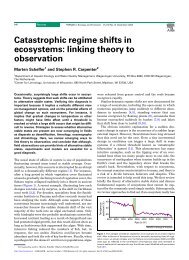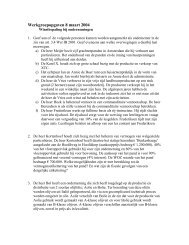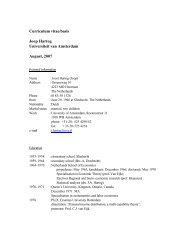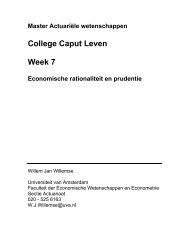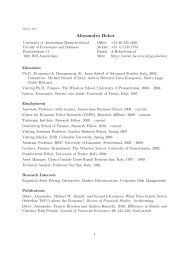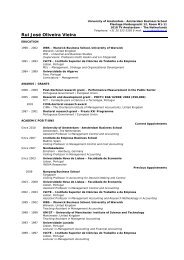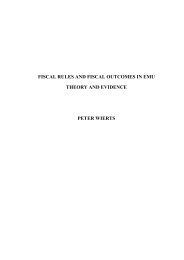How Do Corporate Venture Capitalists Create Value for ...
How Do Corporate Venture Capitalists Create Value for ...
How Do Corporate Venture Capitalists Create Value for ...
You also want an ePaper? Increase the reach of your titles
YUMPU automatically turns print PDFs into web optimized ePapers that Google loves.
experience similar time from first venture investment till exit 2.7-2.9 years <strong>for</strong> acquired firms and 4.2<br />
years <strong>for</strong> IPO firms.<br />
Third, the reputation of existing IVCs is similar across CVC and IVC backed entrepreneurial firms<br />
that went public; it is also higher <strong>for</strong> CVC backed firms that were acquired or written off compared to<br />
IVC backed firms. This suggests that CVCs prompt high reputation IVC to co-invest with them.<br />
Finally, Table 4a allows us to compare the characteristics of CVC backing <strong>for</strong> various sub-samples<br />
of entrepreneurial firms. We find that CVCs on average enter later both in terms of entrepreneurial firms’<br />
age and entrance round number into IPO firms compared to entrance into firms that were later acquired or<br />
written off. Further, CVCs invest more in companies that later go public than in those that were later<br />
acquired or written off. In addition, we observe that IPO companies backed by CVCs enjoy a higher<br />
number of VC corporate parents in a related industry compared to IVC backed acquired firms. The latter<br />
suggests that industry match with the corporate parent aids the entrepreneurial firm in going public and<br />
accessing the secondary market.<br />
5.2 Multivariate Analysis of Exit Strategies<br />
The univariate analysis suggests that CVC backed entrepreneurial firms have a higher probability of<br />
successful exit as measured by IPO or acquisition. In this section we present a more rigorous analysis of<br />
the exit strategies where along with CVC backing we control <strong>for</strong> a number of other firm characteristics<br />
that can potentially affect the likelihood of a firm to have having a successful exit.<br />
Panel A of Table 4b presents a probit analysis of the propensity <strong>for</strong> a successful exit. The dependant<br />
variable is a dummy equal to 1 if the entrepreneurial firm has an IPO or acquisition and 0 if it is written<br />
off by the venture capitalist. To evaluate the effect of CVC backing, we consider various measures of the<br />
degree of firm backing by corporate venture capitalists (e.g., we want to discriminate between<br />
entrepreneurial firms entirely financed by CVCs versus those that only obtained 5% from CVCs and the<br />
remaining investment was provided by IVCs). Here we control <strong>for</strong> the reputation of existing independent<br />
venture capitalists, log of total dollar amount invested by all VCs, and the age of the entrepreneurial firm.<br />
19




